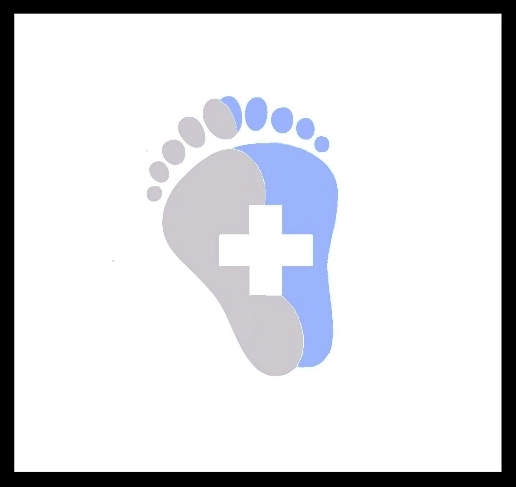Services

Routine Foot Care For All Ages
Foot problems can lead to serious discomfort in your everyday life and can be indicative of larger health issues. Please come visit our clinics if you notice any pain or irregularities in appearance. Foot conditions must be treated quickly so that further problems do not evolve.
With his specialized training, on going research/ education and years of experience, Dr. Dixon offers a variety of services for general foot care as well as on going conditions related to arthritis and diabetes. .

Nail Condition Treatment And Surgical Corrections
Toenails are easily ignored because they are usually hidden away but toenail problems rarely go away on their own. We treat a variety of toenail conditions and below are a few of them.
Fungal Nail Infections
These infections lead to the discoloration and increased thickness of the nail. Nails may even become brittle and break or crumble. They are caused by fungi that enters through a break in the skin and finds its way under the nail. Fungi are present everywhere and the conditions inside socks and shoes make the feet perfect targets. The earlier you discover the fungus and begin treatment with us, the better.
Ingrown Toenails
Genetics, shoe choice, walking and daily activities can all be causes of your nail tissue growing downwards and into your skin. If the nail in fact pierces the skin, added complications such as swelling, pain and infection can occur. Because this problem is usually a recurring one we encourage you to come and see Dr. Dixon as soon as possible. Treatments include; removal of the nail and the destroying of the growth centers that are causing this problem.
Make sure to have your toenails checked if you notice any changes or are uncomfortable with their appearance. Toe and nail conditions can be indicative of larger health issues and you should never wait to get a diagnosis.

Heel and Joint Pain Diagnosis and Treatment
Heels and ankles are important supporting structures for your body and when they are compromised you lose optimal strength and mobility; in everyday activities and sports.
Your heel bone (calcaneus) itself carries a large amount of your body weight and makes both walking and standing possible. A number of tendons and ligaments that move and support the foot are both around and attached to this bone. It also forms a joint with the anklebones to allow side-to-side rotation and ability to adjust to uneven surfaces.
The forefoot has its own sets of nerves, bones, tendons, ligaments, articulations and muscles that allow for the movement of the toes and overall balance. Pain and other problems can cause shifts in the biomechanics of the foot leading to structural pain all over the body.
"Heel pain" or "foot pain" can encompass many issues that are all treatable at our clinics; including the following.
Plantar Fasciitis –A problem with micro-tears, tightening, swelling, and irritation in a band of tissue that connects to the bottom of your heel down to your toes.
Achilles Tendinitis – The Achilles is the biggest tendon in your body. It can get stiff or overloaded and pull painfully on the back of the foot.
Haglund’s Deformity –A bone filled bump that develops when you wear stiff-backed shoes.
Bursitis – A bursa is a fluid sac that protects moving parts from friction. Abnormal tension and ongoing friction of the tendon squeezed between the shoe counter and the back of your heel bone can cause a bursa to become inflamed.
Fractures – Repetitive foot strikes and sudden injuries can create stress fractures. Any form of break in this area can lead to serious problems and pain.
Sesamoiditis – Tiny bones called sesamoids are located in the underside of the forefoot. Pain is caused when the tendons surrounding these bones become inflamed.
Capsulitis – Commonly in the second toe the ligaments that form a "capsule" around a joint become inflamed and painful.
Tarsal Tunnel Syndrome – When the tibial nerve that travels along the inner leg becomes compressed it can cause pain throughout the foot and heel.
Hallux Limitus – Gradual loss of motion and mobility in the big toe that can become worse overtime if not treated.

Diabetic Foot And Wound Care
Professional foot care is necessary if you have diabetes. Many symptoms of the disease can take hold in the feet before other parts of your body. Regular foot exams are encouraged in order to diagnose, prevent and treat many foot problems common to diabetics such as autonomic, motor and sensory neuropathy and vascular disease.
In treating problems we do everything from helping you pick the right socks and shoes to treating any subsequent wounds you may have on your feet. Wound care should be done in order heal from the inside out as efficiently as possible. This is done through the removal of dead tissue, controlling bacteria, improving cell function and encouraging platelet-derived growth in order to speed healing. We encourage regular maintenance of dermatological conditions at our clinic including corns, callouses and thick nails.

Arthritic Condition Care
Grinding and gradual "wear" between the bones of any joint can create inflammation and stiffening. Gout and rheumatoid arthritis can cause this. Osteoarthritis, due to long-standing foot misalignment, is the most common form of arthritis.
Osteoarthritic pain reduces the amount of physical activity one can do and can lead to a secondary diabetic condition or coronary arterial disease. At our clinic we believe in taking steps to treat these issues rather than simply masking the pain caused by them.

Biomechanical Evaluation and Custom Orthotics
Biomechanical issues can cause problems of discomfort stemming from your foot. These problems are usually progressive and may need custom orthotic devices in order to compensate for them.

Bunion, Hammertoe And Neuromas Treatment
Treatments for these foot problems include both surgical and non-surgical options. Shoe modification, supporting the arch and cortisone treatments usually take place before surgical options are considered unless the symptoms are extremely advanced.
